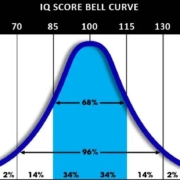Parents frequently ask me about the Disability Classification on their children’s IEPs. This is usually found at the top of the first page. They ask whether it matters what their child is classified under. Before addressing this issue, we need to understand how classification works. Under the Individuals with Disabilities Education Act (IDEA) a “child with a disability” is defined as a child who fits into one of thirteen categories and “who, by reason thereof, needs special education and related services.” Some of the more common classifications in New York include: Specific Learning Disability (SLD); Speech or Language Impairment; Other Health Impairment (OHI); Autism; Emotional Disturbance (ED); Multiple Disabilities; and Intellectual Disability. Frequently children can fall under multiple categories. I have seen some students who could properly be classified under Autism, OHI, ED, and SLD (and sometimes more). But the IDEA stipulates that a child can only be classified in one disability category. So what’s a CSE to do? Often CSEs will try to identify the disability that affects the child’s education the most. And it’s not uncommon to change classifications as the child develops. But, how much does it realllly matter??
Remember, no matter what, The IEP Must Meet the Unique Needs of the Child
Though there is some disagreement about this, I would argue it really doesn’t matter too much in New York; with certain exceptions, of course (Don’t you hate how attorneys can never give you a straight answer!). Classification doesn’t matter so much IF, as required, the CSE identifies and addresses whatever needs the student has. That means that the the District must assess the child in all areas related to the suspected disability, whether or not commonly linked to the disability category in which the child has been classified. (Of course if this isn’t done, you can ask for an Independent Educational Evaluation.) Districts often point to this “No Harm, No Foul” defense.
When Does Classification Matter?
There are certain times when the choice of classification does matter. Depending upon the classification, the CSE may approach the needs of the child with a certain bias. For instance, they may lower expectations for a student classified as having an Intellectual Disability (though, if you need more support for why we should not be lowering expectations for these students, I recommend you view this free screening of Intelligent Lives.) Also, an Autism classification may make it easier to obtain certain related services.
Perhaps most importantly, if you are seeking an out-of-district placement, classification may matter a great deal. In order for a CSE to recommend a private school, that school must be approved to accept children with the classification your child has. Finally, I have represented children with emotional issues with their primary trigger being academic stressors. Once they switch to a school which addresses these needs, the emotional component may become less of an issue. Unfortunately, some schools can’t see past an ED classification. So while I advise you and your CSE to be completely open to potential schools about these issues, you should consider whether an ED classification is appropriate when others may be more suitable.
If you have questions about IEP classification or other issues, please contact me.











Trackbacks & Pingbacks
[…] anxiety. There are two steps to qualify for an IEP. First, the child must have one or more of 13 disabilities specifically listed in the Individuals with Disabilities Education Act (IDEA). Those disabilities […]
Comments are closed.